The heartbeat of the Hawaiian people has re-emerged, reverberating through the centuries with fullness, clarity and strength since once being banned. Kumu hula and hālau hula had gone into hiding at one point in history, practicing in secret. Then, when David Kalākaua became king in the late 1800s, he initiated a resurgence of Hawaiian arts and culture known as the First Hawaiian Renaissance.
Hawaiians say ‘haweo’ to refer to a glow of light that makes things visible. It is in the light of knowledge that the darkness and confusion of the past are now being destroyed and the heroic deeds of our ancestors are being revealed. The responsibility is now ours to carry on where they left off. From resistance to affirmation, we are who we were.”
Ku‘ualoha Ho‘omanawanui, Hawaiian scholar, aloha ‘āina advocate and poet, wrote this in reference to Kānaka Maoli (Native Hawaiian) activist Kau’i Goodhue and the call for resistance.
In the 1800s, when the missionaries first sailed to Hawai‘i, they arrived with puritanical Calvinist values drastically countering those found in traditional Hawaiian society. Hula was banned as too erotic and worshiping Hawaiian gods was condemned. Hula is an important part of religion and that’s why it was chosen to be annihilated. Many teachers went into hiding.
When writing about Kānaka Maoli empowerment, Ho‘omanawanui is empathic. “Branded ‘lewd and lascivious’ by Calvinist missionaries, hula was officially banned as a cultural practice in the 1830s. Yet many hālau (hula schools) continued to practice and perpetuate hula in secret, despite missionary protests.”
Hula is and always has been an important storytelling vehicle for Hawaiian mo‘olelo (stories), she continues. “In the 19th century, Ali‘i (King) David Kalākaua proclaimed it ‘the heartbeat of the Hawaiian people.’”
When he became king, Kalākaua brought the heartbeat back and this movement became known as the First Hawaiian Renaissance, when Hawaiian arts and culture thrived. But after the monarchy was overthrown in 1893, hula went underground until the Second Hawaiian Renaissance of the 1970s, which marked a renewed interest in everything Hawaiian. The new aloha had finally begun — the hiding was over.
Today, among many, there are three kumu hula (teachers) and hālau that have personified the art of the dance — Robert Cazimero and Hālau Nā Kamalei, Vicky Holt Takamine and Pua Ali‘i ‘Ilima, and Michael Pili Pang and Hālau Hula Ka No‘eau. All three were taught and mentored by legendary hula master Aunty Ma‘iki Aiu Lake, and they have continued the legacy of one generation inspiring another. A fourth kumu hula, Keolalaulai Dalire and Keolalaulani Hālau Olapa O Laka, was inspired and taught by her mother, the first Miss Aloha Hula at the Merrie Monarch Festival in 1971— Aloha Dalire.
Robert Cazimero and Hālau Nā Kamalei
For many, there is a defining moment when the voyage of discovery leads you back to yourself. For Robert Cazimero, it occurred in 1966, the year he was introduced to Aunty Ma‘iki Aiu Lake, a kumu who would teach him the ways of hula. Robert says nothing happens by accident. He was meant to be taught by Ma‘iki and believes what she believed: We can all be made better for daring to dance.
A statement like that can be construed as a challenge, and for Robert, that’s exactly what it was. Nā Kamalei was her dream, he says, and it was Ma‘iki who asked him, her student at the time, to open a hālau for male dancers.
“I loved her so much,” he says, “I would have done anything she told me.” In 1975, with six young high school students, he founded Hālau Nā Kamalei.
Today, Robert Cazimero is considered one of the most respected kumu of Hawaiian dance. The men of Nā Kamalei perform around the world, and for nearly half a century, have carried on the tradition of male hula. They have won most major hula competitions, including the prestigious Merrie Monarch Festival on Hawai‘i Island. As an explanation for the hālau’s success, Cazimero says, “Hula is life.”
Nā Kamalei’s enduring strength comes from adherence to one steadfast creed: Dare to hula and leave your shame at home. “There are times when I don’t want to get up and dance, but, sometimes, you just have to leave old thoughts behind and just do it,” Robert says. “You have to leave the shame behind, to forget what
others are thinking about my dancing.”
In ancient times, hula was a sacred practice in which music, dance and poetry encompassed the genealogy and legends of Hawai‘i’s people. While the first mention of hula in recorded Hawaiian history is of a woman, it was men who performed the ritual dances. Through talk story, Hawai‘i’s oral tradition, stories about the gods were passed on through nā mele (songs) and nā hula (dances), and regarded as the highest form of spiritual and artistic expression.
Al Makahinu Barcarse, hula master of Ka Ua Kilihune, says, “At one time in our history, nothing was written down. There was no written language and everything had to be memorized. Hula keeps our history and our people alive, and without it one cannot truly identify oneself as being Hawaiian.”
“I studied hula because of language,” says Holoua Stender, Hawaiian dance instructor at Kamehameha Schools. “I could see the beauty of the poetry and beauty of the Hawaiian language through dance and chant. That’s what made me interested in hula, because hula demonstrated the beautiful soul of the Hawaiian language.”
The island spirit isn’t only measured by words, but by actions, and for Robert, his encompasses both. He is most at home when blending the motions of lasting gestures into a oneness that celebrates life’s dance.
In 2005, at the internationally renowned Merrie Monarch Hula Festival, his efforts led directly to the winner’s circle. Nā Kamalei won the kane kahiko (traditional) chant, kane ‘auana (contemporary) song and overall festival awards. Although they expected to place well in the kane (men’s) division, it’s unusual for a men’s hālau to be chosen the overall winner.
About the multiple win, he says, “I am so proud of my students. I really only came back for them,” referring to breaking his own rule of entering Merrie Monarch every 10 years. He wanted to give his students the chance to celebrate the hālau’s 30th anniversary there, especially since two were from the original 1975 group. What made the 2005 win so poignant was that Robert and his men won the festival’s kane award in 1976, one year after the hālau was formed.
When Nā Kamalei members received their trophies in front of the judges, his hālau peers and a screaming crowd of several thousand, Robert announced, “In a lot of things in life, you work hard and don’t get a nod. This is more than a nod. It’s humbling; it’s outstanding.” Then he looked out into the audience and tipped his cap.
Robert has a rule that the hālau travels to Hilo to compete in Merrie Monarch every 10 years. In 2015, they won the kāne division and overall winner. And this upcoming festival in 2025, Hālau Nā Kamalei is preparing to return again.
The hālau was founded in 1975 and in 2025, they will celebrate their 50th anniversary.
As a musician and kumu hula, Robert has this to say: “The best thing Hawai‘i can do is let the world know that we have a dance form. What the world can do is let Hawai‘i know that dance is universal. People are drawn to hula, not just the hālau. That’s the way art is — it’s inviting; it’s enticing.”
Vicky Holt Takamine and Pua Ali‘i ‘Ilima
In a 1995 interview, Vicky Holt Takamine described her own history in hula and her philosophy for teaching. “I started dancing at a very young age by watching television and watching my mother dance. She used to dance with the Alama sisters. I took formal lessons with Ma‘iki Aiu at about the age 15…”
“I knew I was going to be a teacher when I started dancing with Aunty Ma‘iki,” she says. “I had a love for the hula and Hawaiian culture, and I knew that’s what I wanted to do.” In 1975, Vicky graduated as ‘ōlapa (dancer), ho‘opa‘a (chanter) and kumu hula. Because Aunty Ma‘iki was her only teacher, she didn’t think that she could diverge from her style of dance. “Of course, you develop your own ways, but the basic foundation that she’s laid for me will always be there. I think I pretty much carry on her style of dancing.”
Back in 1977, Vicky founded her own hālau hula — Pua Ali‘i ‘Ilima (Royal ‘Ilima Blossom). The school’s mission is to preserve and perpetuate Native Hawaiian arts and culture traditions for future generations.
About her own hālau and haumana (students), Vicky says, “When students come to me, the first thing I tell them is that I might not be the right teacher for them. So if they don’t care for the way I’m teaching or if they’re not getting anything out of my classes, I don’t feel badly if they want to move on. If they come and they want to adapt to my style, then the first thing we do is train in kahiko.
“I also teach them the text of a song because the important thing about the dance is not just the movements, it’s the text,” she says. “Just teaching feet and hands has no meaning. It is not Hawaiian. I teach them a song right away to get them moving and get them involved. I want them to feel that they can accomplish a chant or a song in a short period of time. I want to start getting them to feel very confident in their own ability.”
She enjoys sharing different experiences with her students — seeing them get involved and watching them develop as a dancer, and develop self-confidence and grace. “It’s satisfying to nurture somebody who will want more of the Hawaiian culture and the language instead of just the movements to the dance.”
Vicky: Ola Ka ‘Ilima Artspace
Since her humble beginnings, Vicky has become a kumu hula, social activist and community leader, seeking creative solutions that would rectify the many wrongs her people and native artists have endured. She is executive director of the Pa‘i Foundation. Its mission is to preserve and perpetuate Native Hawaiian cultural traditions for future generations.
In 2020, she expressed her mana‘o (thoughts) about “huliau” — a time of change. As we navigate the next few years, she wonders what lies ahead. “What kind of society will we be? Who will survive? Will we be more compassionate, loving, caring to one another? Will there be justice for all?
“We have a lot of challenges in the Native Hawaiian community,” she explains, citing hotels built in sacred locations and her people’s overall invisibility in their homeland. “For artists, those challenges also include getting their work seen, being included in exhibitions, experiencing critiques,” she says.
In 2017, Vicky got her wish for change when Ola Ka ‘Ilima Artspace Lofts in Honolulu broke ground. The new, mixed-use arts development — created with support from the Ford Foundation, the National Endowment for the Arts and ArtPlace and with local developer Hui Kauhale Inc. — is located in the Kaka‘ako neighborhood of Honolulu, a transitional area between downtown and Waikiki Beach.
“We are excited and thrilled to partner with Artspace,” she says. “This is exactly what we need in Honolulu to help boost our economy by providing affordable live and work space for our local community of artists.”
Vicky: Shangri La
In 2024, Shangri La Museum of Islamic Art, Culture & Design in Honolulu chose Vicky as the center’s Native Hawaiian cultural advisor. “Shangri La exists because of Doris Duke’s deep and abiding passion for Hawai‘i, its people and its culture,” said Sam Gill, president and CEO of the Doris Duke Foundation. “I can think of no one better than a revered Kanaka ‘O¯ iwi (Native Hawaiian) like Kumu Vicky to enrich Doris Duke Foundation’s essential connection to our community and its proud traditions.”
“I continue to be inspired by Shangri La, its history and dedication to Islamic art and culture,” Vicky says. “It is a privilege for me to work alongside the Shangri La staff to be able to share the rich cultural traditions, mo‘olelo (stories) and the history of Hawai‘i to develop a stronger pilina (connection) between Shangri La, the ‘āina (land) and the people of Hawai‘i.”
Vicky: Gish Prize
Last year, for her work with Hawaiian arts and culture, Vicky was awarded the 31st annual Dorothy and Lillian Gish Prize from the Gish Prize Trust. The award is given each year to a “highly accomplished figure” who has “pushed the boundaries of an art form, contributed to social change and paved the way for the next generation.” In the words of Lillian Gish, a pioneer film actress, the annual prize is intended for an artist or arts advocate “who has made an outstanding contribution to the beauty of the world and to [humankind’s] understanding and enjoyment of life.”
Terrance McKnight, the chair of the selection committee, said, “The recipient of the Gish Prize needs to be both a creator and an instigator — someone who has enhanced beauty in the world and worked to make society more whole, someone who is highly accomplished and yet remains an agent of change. This year, the selection committee rose to the challenge by lifting its eyes across the horizon and unanimously choosing Vicky Holt Takamine. It is an honor to present the Gish Prize to her, helping to bring her contributions to culture the recognition it so richly deserves.”
“What an honor for my people and my community and for Hawai‘i and for the art of hula, which never really gets this kind of recognition.”
Hula, she said, is often seen as a form of entertainment for tourists, but for her, it is a way to safeguard indigenous culture — how we preserve our culture, our stories and the Hawaiian language, she says. “Hula is a form of resistance,” she says. “This has been my life’s work. I don’t think about it. I just do it. And to be recognized in this manner for me is like validation and credibility.” I hope it brings awareness to my people and my culture, she says.
Michael Pili Pang and Hālau Hula Ka No‘eau
For Michael Pili Pang, hula has been a lifelong experience. One day in school when he was being kolohe (mischievous), his teacher, who was also a social worker, took him to a hula class. “Her sister was teaching the class and I learned hula from her through grade school,” he says. “When I went to high school, she said I can’t do anything more for you, and told me to call Aunty Ma‘iki.”
“The three of us come from different stages in hula,” says Michael. “Vicky is first as a child in the 1960s, then Robert in the 1970s, and I come in the end of the 1970s and ’80s. There’s a good 20-year span between the three of us and each of us had a different time with Aunty Ma‘iki.”
Michael has worked with her for many years. When he went to college at Puget Sound University, he joined the Hawaiian Club. Aunty Ma‘iki told him to start teaching hula. He ended up teaching hula, organizing the club’s lū‘au.
“When I came home from Puget Sound, she said, ‘Now, finish your hula training.’” She was going to Japan, and when she came back, they planned to talk about hula… everything. “But when she returned, she died. I thought my future died; hula is pau (finished). But I continued to work because I thought it was important to continue her legacy.”
Michael firmly believes in huliau — to look back in order to move forward. “Hula is an indigenous art form,” he says. “It is not something that has to be kept on a shelf. It evolves.”
He says his styling mirrors Ma‘iki’s. In the 1800s, Hawaiians spoke poetry and understood the innuendos of poetry. A flower wasn’t just a flower; a lei not a lei. It was a lover. Certain words have many meanings. Aunty Ma‘iki conveyed that in her dances. “You can’t just mimic music or show off the words. You have to interpret words and present them as if you understand them. Her philosophy comes from idea that hula is everything you see, hear, taste, touch and feel.”
In 1986 Michael opened Hālau Hula Ka No‘eau on Hawai‘i Island, and later in 2002, he added a second hālau in Honolulu. He explores both the traditional styles of his hula genealogy and creates new hula based on Hawaiian tradition. They have taught hula classes in Waimea, Honoka‘a, Hilo, Kona, Waikoloa and in Chicago. Since 1994, they have performed throughout North America, Korea, Japan and Taiwan.
Michael became a senior staff member for then-Mayor Mufi Hannemann’s administration. As executive director in the Office of Culture and the Arts, he created granting programs, built the arts administration (a staff of five, all practicing artists), fostered partnerships and collaborated on cultural and capacity-building programs.
“To this day, we are recognized as the keepers of Aunty Ma‘iki’s tradition,” Michael says. When he dances, he says, he still sees her in front of him, showing him what to do, “The feelings you express in the dance are the most important.”
To further hula’s reach in Honolulu, Michael offers hula classes for anyone interested in learning to dance. “I run an ad two times a year. I want new students to learn my styling that was passed down to us. They start from ground zero. I want them to learn how to hula my way. People would say that my dances are like Aunty Ma‘iki’s, but that was not my intention. I ended up maintaining her teachings. It never was my intention. It just happened that way.”
Keola Dalire and Keolalaulani Hālau ‘Olapa O Laka
Hula is about tradition and passing the torch to future generations. No one knows that better than kumu hula Keola Dalire.
“For a long time, hula was just a dance to me (entertainment or cultural preservation) but my mom instilled in us that hula is expression of our innermost feelings,” says Keola. “It helped me realize that hula can help you express grief, anger, joy, happiness and love. When you come to hālau, leave everything at the door and come in with an open mind and allow yourself to just feel. Hālau is her safe space and security,” she says.
Keola said that her mother, Aloha, was the first hula dancer to win the coveted Miss Aloha title at the Merrie Monarch Hula Festival the year the festival launched its hula competition in 1971. Keola said that her two sisters succeeded their mother by winning the title — Kapualokeokalaniakea Dalire as 1991 Miss Aloha Hula; Kau‘imaiokalaniakea Dalire in 1992.
In 1999, Keola, the third and youngest daughter, also won the title. “This was not only an honor,” she says, “but a privilege for me to join the long line of women who have become Miss Aloha Hula.” She said it’s even sweeter knowing that her mother was the first to win the honor more than a half-century ago.
In 2013, her hālau celebrated its 50th anniversary. When interviewed by “Ka Wai Ola” back in 2013, Aloha was asked what her mother would say about her hālau’s legacy stretching five decades. “Honestly, I think she would be really proud and she would say ‘Hula is alive and well, and it is the koko (lifeblood) of our family.’”
Hula became a choice. “I chose to be here. My mother said she never forced us to dance hula, but that’s all she exposed us to. Sometimes I like to tell myself I chose hula, but if I be honest, hula chose me. It’s an honor for me to dance and perpetuate my culture and the lessons learned and continue to learn with my haumana.”
When asked about the emotional impact of hula, she refers to “kaona”—“hidden meaning.” Two years ago, her hālau performed a mele at Merrie Monarch about electricity arriving in Kane‘ohe, which it could have been, but when you think about kaona, it’s a love story.
“You compare electricity going on and off with being in a relationship,” she says. “This song had a hidden meaning. It’s a story about electricity coming over mountains to Kane‘ohe, but the original words of this song is a love song, a story between two people and how they had that ‘aha moment,’ and they get married. Everyone thinks it’s electricity, but it’s about types of electricity — not the just the kind going through to a lightbulb.”
Keola says that she opens up her hālau for hula classes. Everyone is welcome. People of all ages come to learn to dance hula, and we also offer classes for kūpuna — for exercise, to keep moving and have fun. Our classes are offered Mondays, Wednesdays, and Thursdays from 4 to 9pm.
Keola says what she values are the teachings and sentiments of her mother. “Hula is the expression of one’s innermost feelings,” she says. And that brings us back full circle to Kumu Robert Cazimero and his firm belief that hula is life.
To Conquer the Darkness, Shine Your Brightest
When asked what lesson he’d like to impart, Robert Cazimero says this about his voice in hula and mele: in an interview with the Keep It Aloha podcast, Robert says that when he sings, he goes someplace. “It’s like a perfect singing storm. It could be the lighting, the people, but mostly it’s me. It has to do with the farthest light that I can see wherever I am — whether it’s a star or a pin light… the farthest light away from where I am.
“I sing to that spot because I think that’s where all the people I know are who are around me. That’s where they come from. I feel like I’m singing to them — it’s when my voice is the sweetest, happy, grateful, sad, emotional singing.”
“No matter how much time I have left,” he says, “it’s important to do the best you can, for our people, to be strong, to love who you are, and love others for who they are. It’s easy to say, but hard to get there, but once you get there, you wonder what took you so long.”
For more information on joining a hula class, contact:
Michael Pili Pang and Hālau Hula Ka No‘eau:
halauhkn@aol.com
Keola Dalire and Keolalaulani Hālau Olapa O Laka:
khoolhula@gmail.com

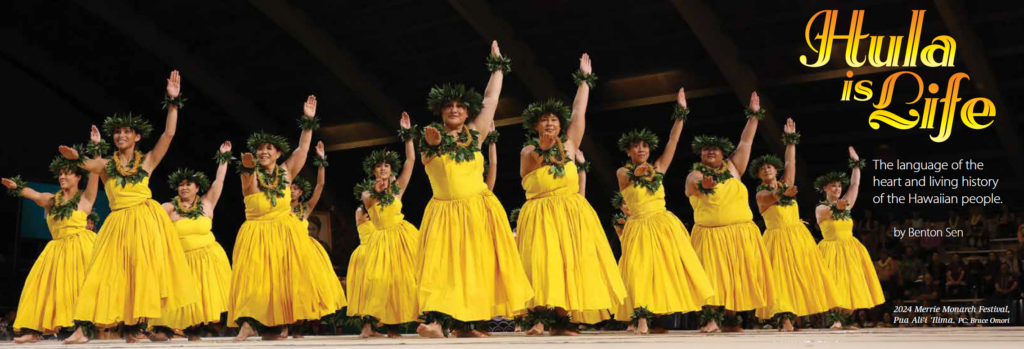
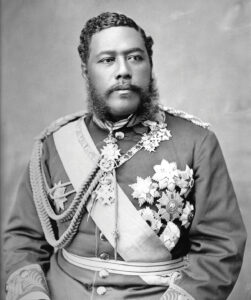
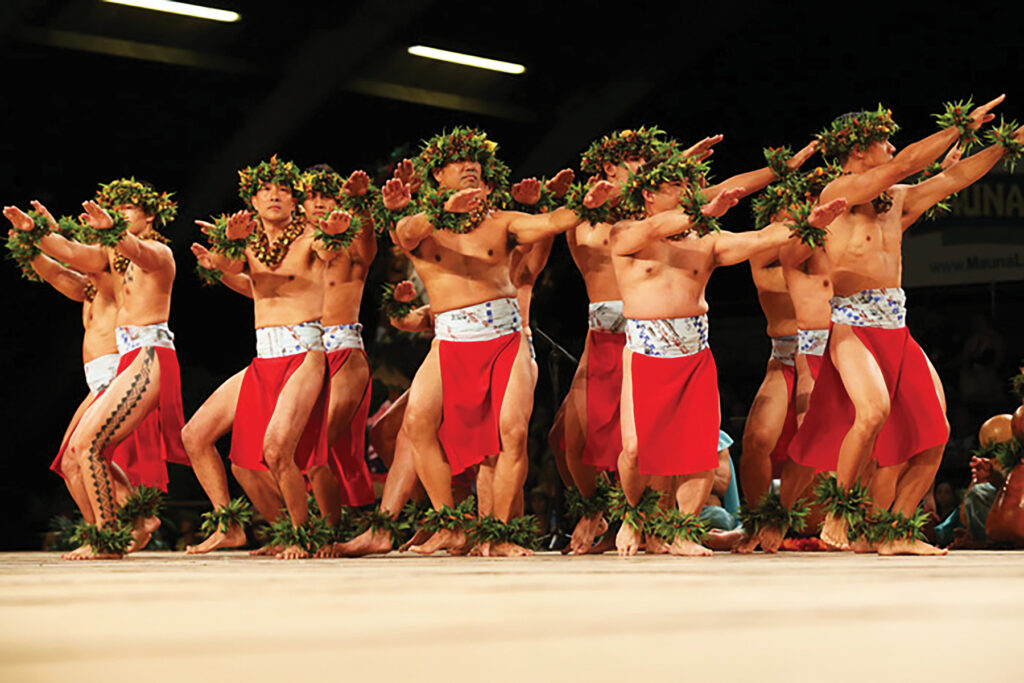
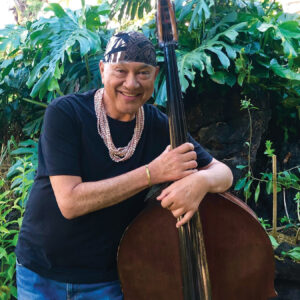
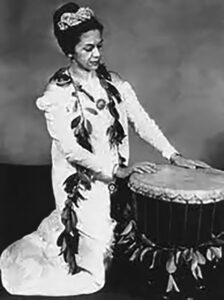
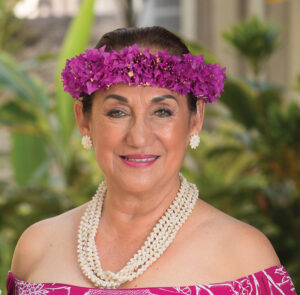
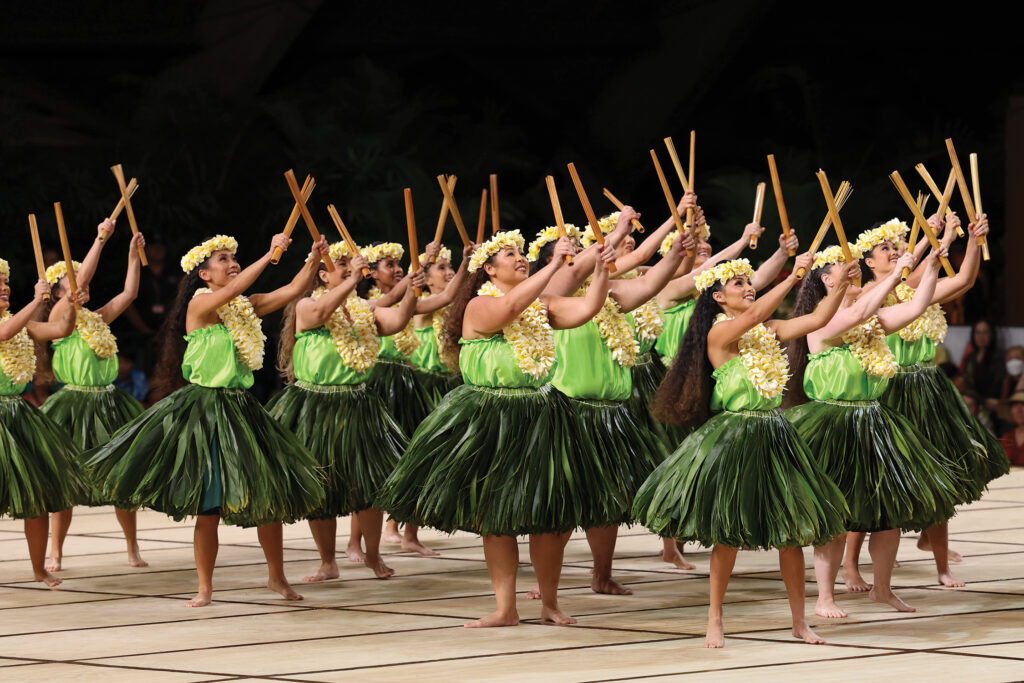
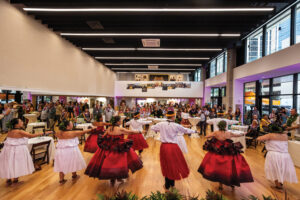
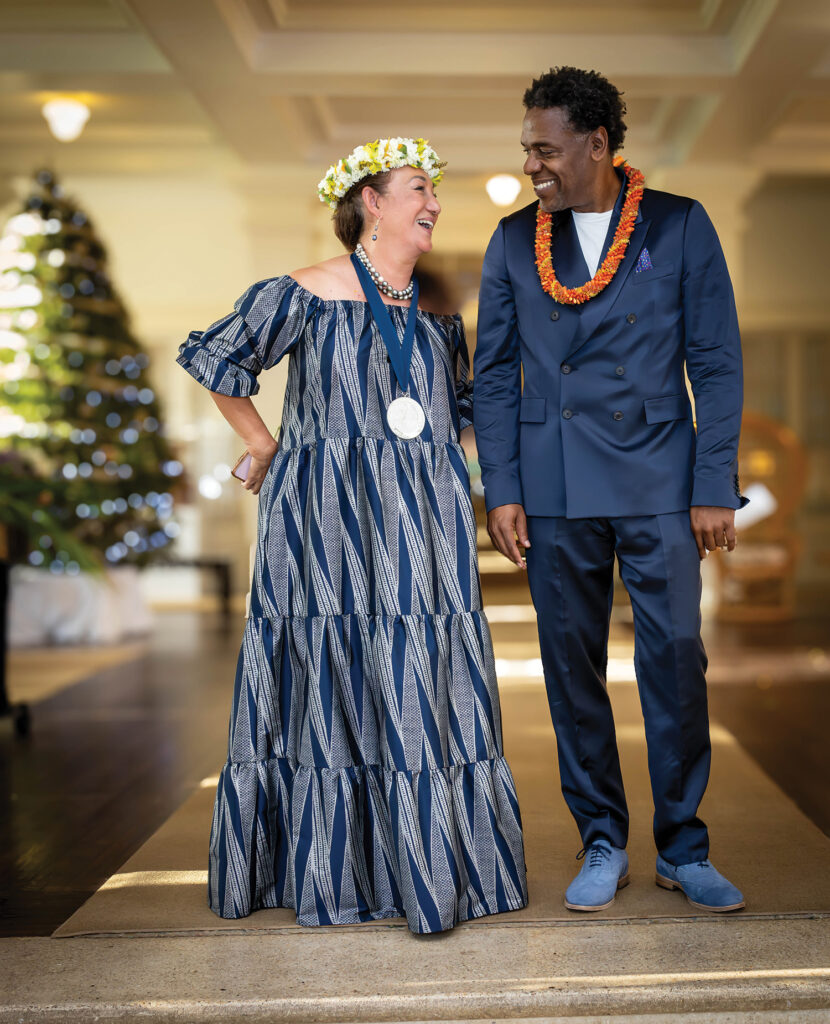
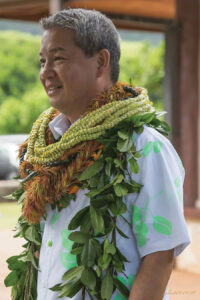
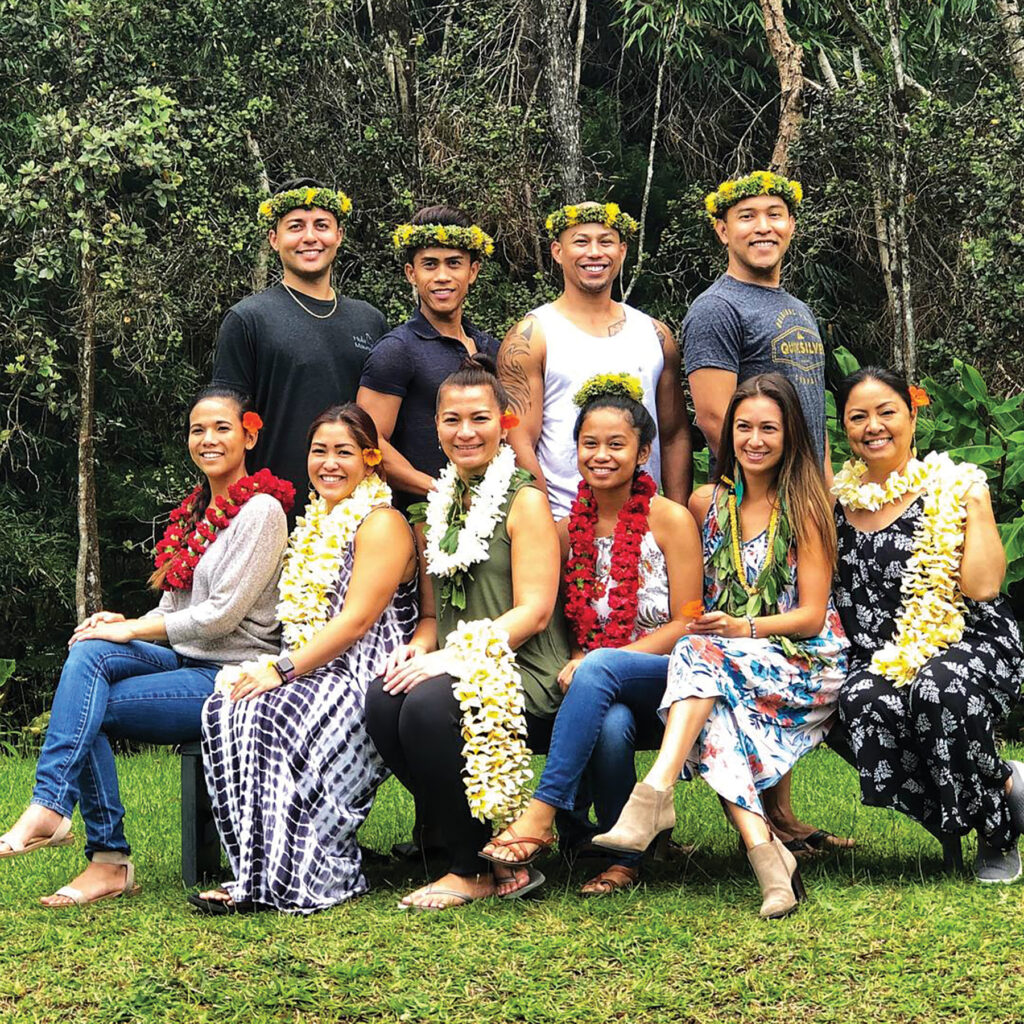
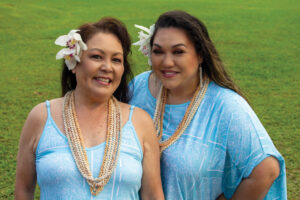
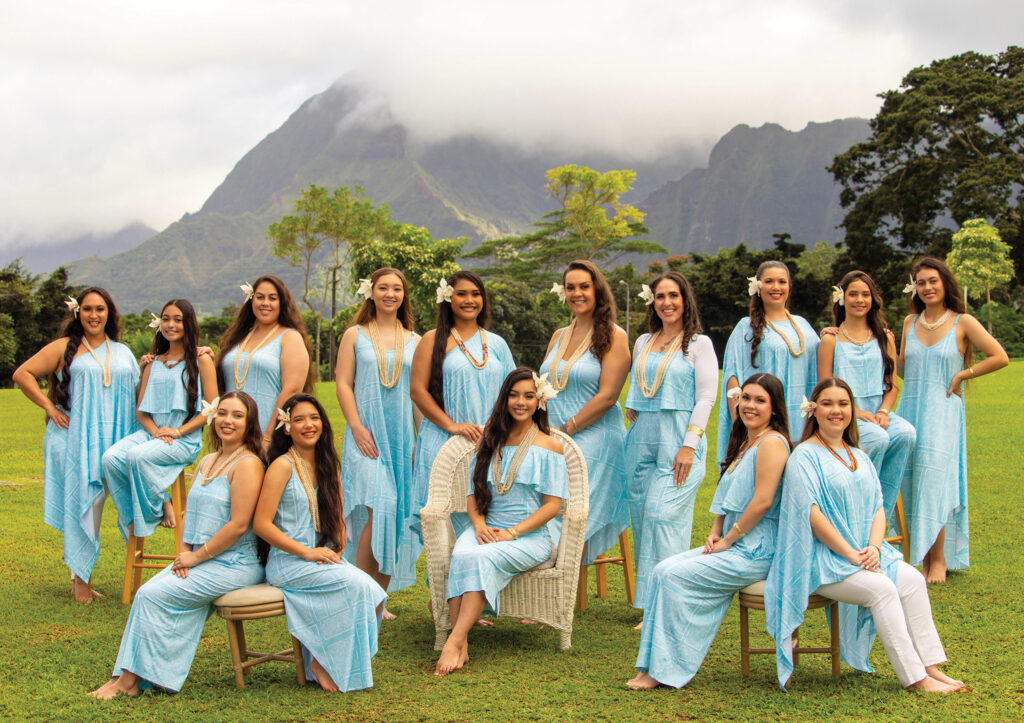
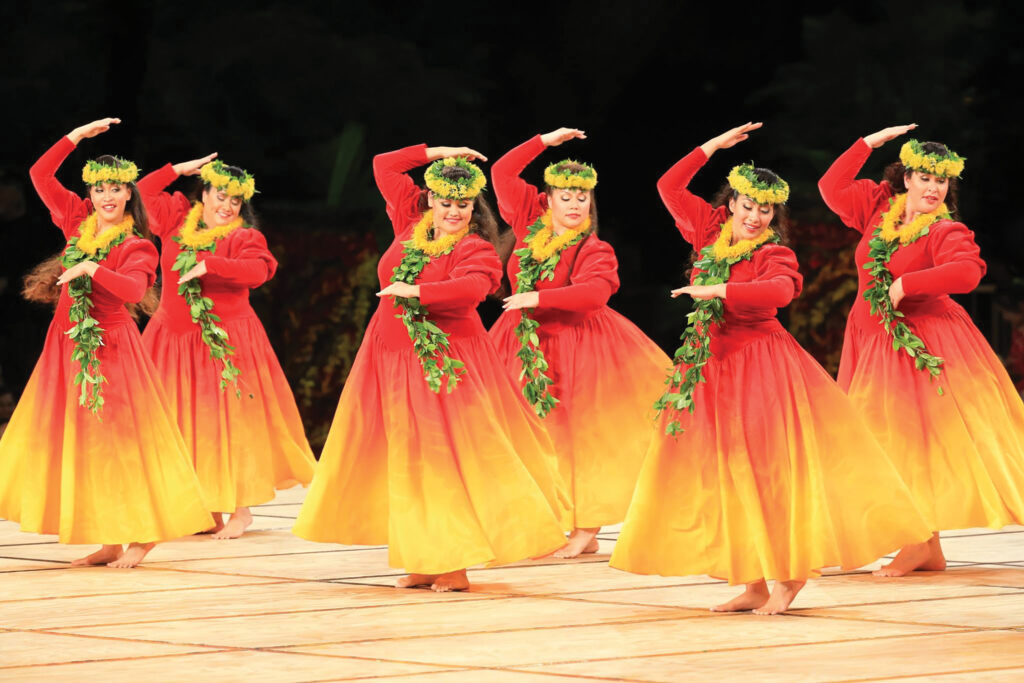
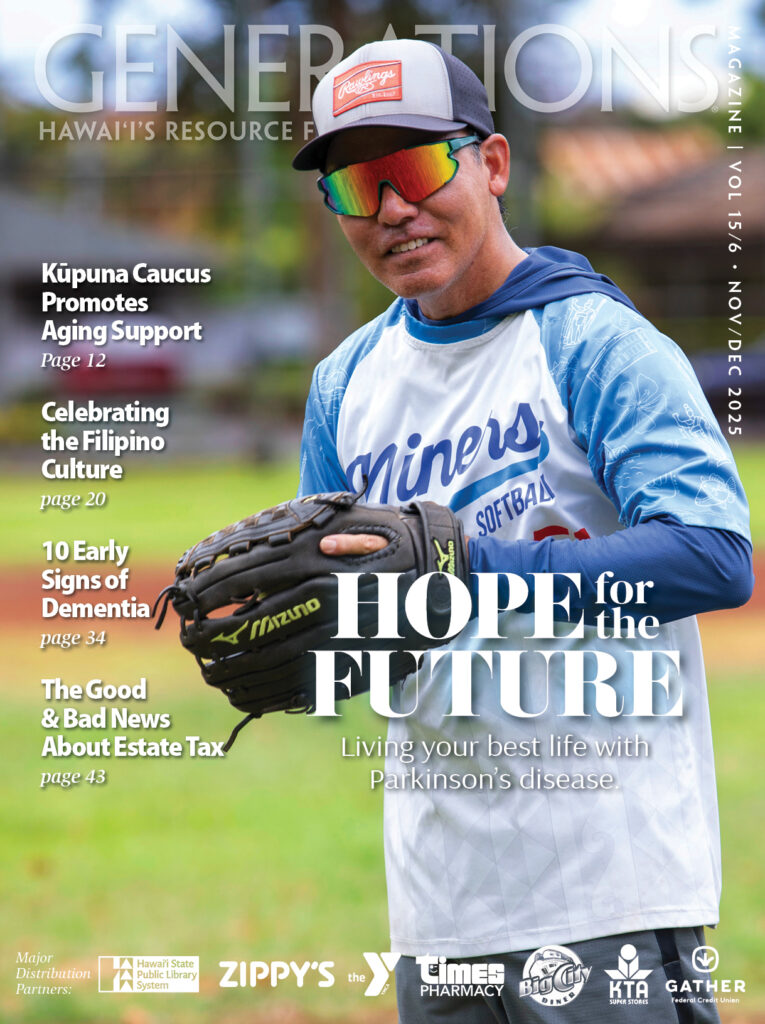
Leave a Reply